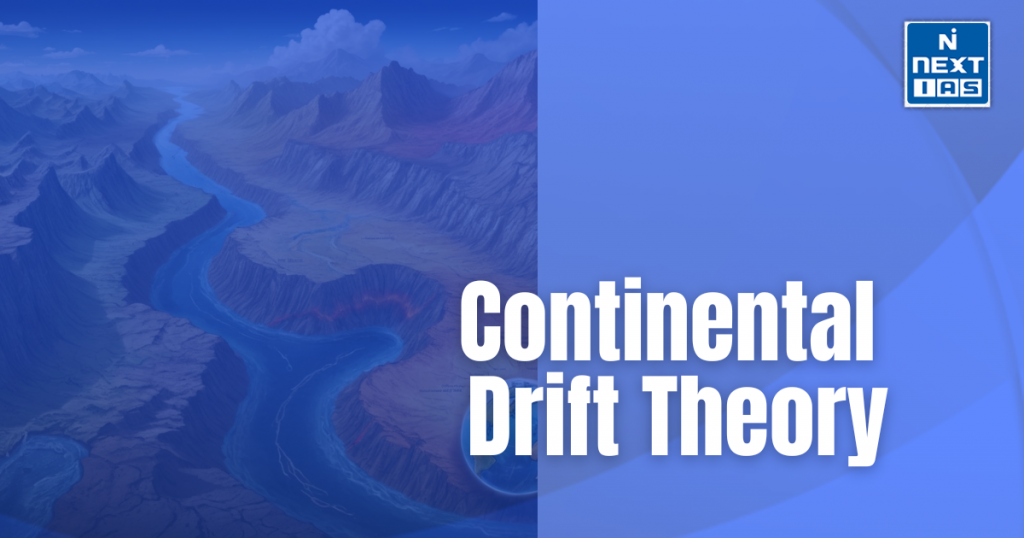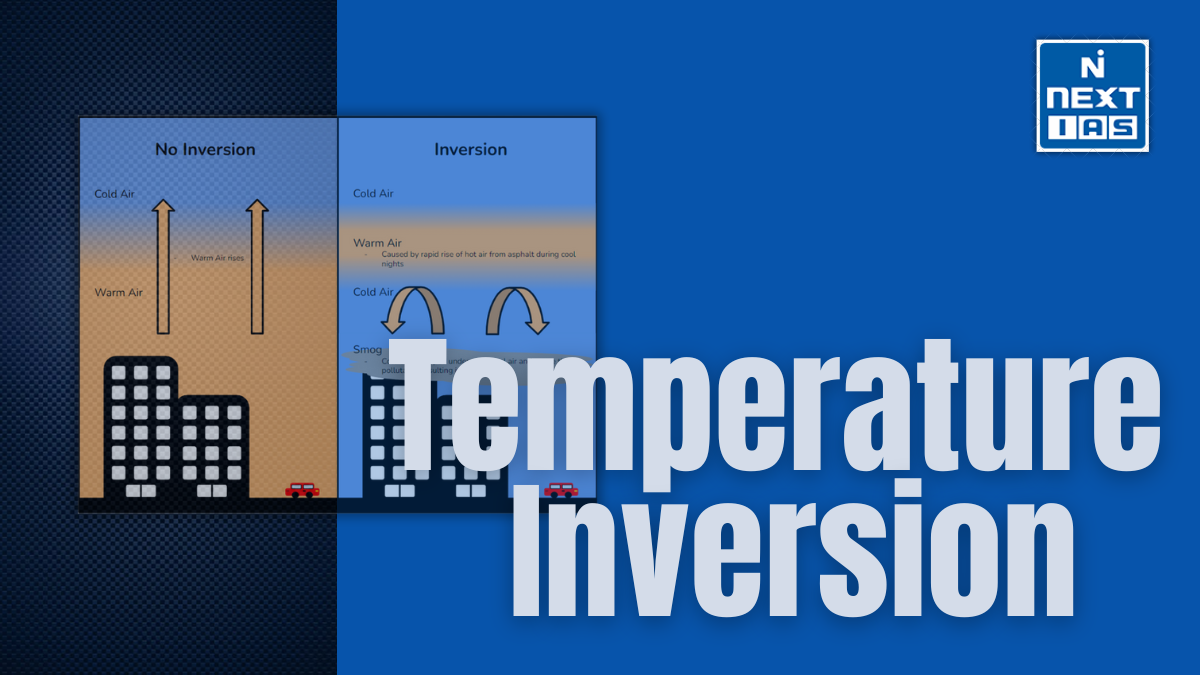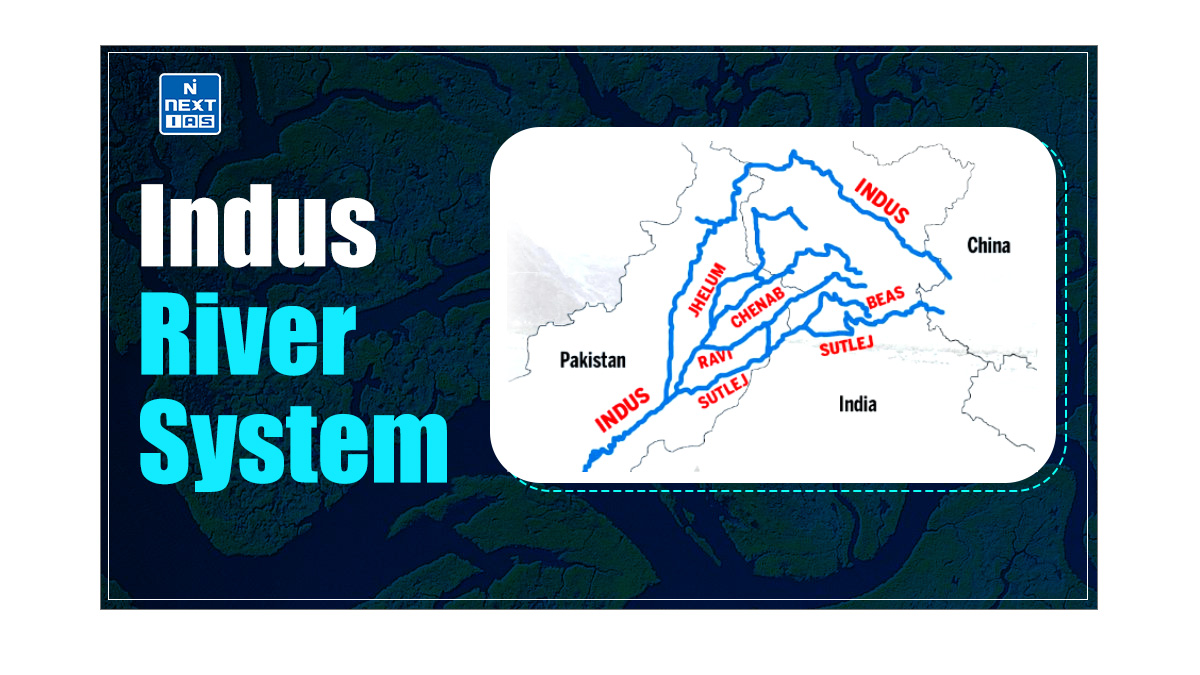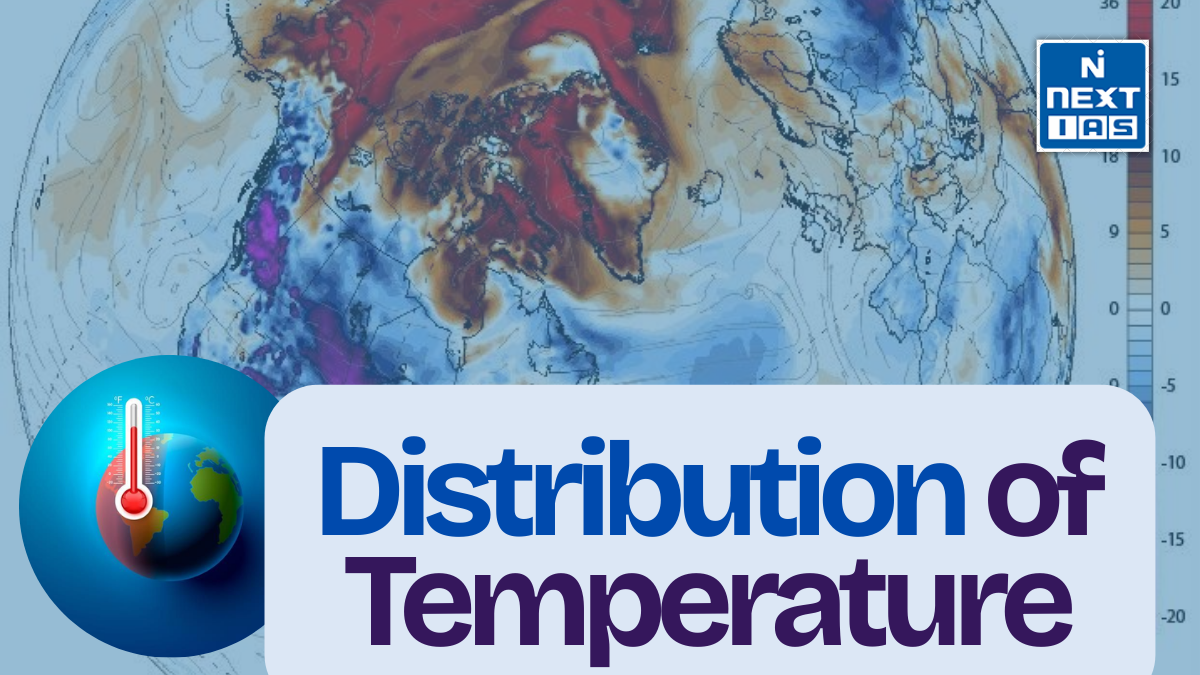
The Continental Drift Theory, proposed by Alfred Wegener in 1912, suggests that Earth’s continents were once part of a single supercontinent, Pangaea. Over millions of years, they drifted apart due to tectonic forces, explaining the distribution of fossils, geological formations, and the fit of continental coastlines.
About The Continental Drift Theory
- The Continental Drift Theory, proposed by Alfred Wegener in 1912, posits that Earth’s continents were once joined together in a single supercontinent called Pangaea, which existed around 300 million years ago. Over time, Pangaea began to break apart, and the continents drifted to their current positions due to the movement of tectonic plates.
- Wegener’s evidence included the similar fossil records found on continents separated by oceans, such as Africa and South America, and the matching geological formations and mountain ranges across continents. He also noted how the coastlines of continents like South America and Africa appeared to fit together like pieces of a jigsaw puzzle.
- While initially controversial, the theory laid the groundwork for the modern understanding of plate tectonics. Today, scientists recognize the role of seafloor spreading and the movement of Earth’s lithospheric plates in explaining continental drift, fundamentally changing our understanding of Earth’s dynamic nature.
Continental Drift Theory Forces for Drifting
The Continental Drift Theory suggests that Earth’s continents were once part of a single supercontinent and gradually drifted apart due to various geological forces. While Alfred Wegener initially proposed the theory, the forces responsible for continental drift were not fully understood until the development of plate tectonics. The primary forces for drifting include:
Mantle Convection
- Heat from the Earth’s interior causes convection currents in the semi-fluid asthenosphere beneath the rigid lithosphere.
- These currents create a dragging force that moves the tectonic plates, causing continents to shift over time.
Seafloor Spreading
- In mid-ocean ridges, new oceanic crust is formed as magma rises from the mantle and solidifies.
- As new crust pushes older crust away, continents are pushed apart, driving the drift.
Slab Pull
- As denser oceanic plates subduct into the mantle at subduction zones, they pull the rest of the plate along with them.
- This “slab pull” helps drag the continents toward or away from each other.
Ridge Push
- As the lithosphere is pushed upward at divergent boundaries, the elevated ridge exerts a force that pushes the plates apart.
Together, these forces explain how continents can drift across the Earth’s surface over millions of years, shaping the planet’s geological landscape.
Evidences of Continental Drift Theory
The Continental Drift Theory, proposed by Alfred Wegener, is supported by several key pieces of evidence that suggest the continents were once connected and have since drifted apart. These include:
Fossil Evidence
- Identical fossils of plants and animals, such as Mesosaurus (a freshwater reptile) and Glossopteris (a fern), have been found on continents now separated by vast oceans, like South America, Africa, and Antarctica. This suggests these landmasses were once connected.
Geological Evidence
- Similar rock formations and mountain ranges are found on continents that are now far apart. For example, the Appalachian Mountains in North America align with mountain ranges in Scotland and Scandinavia, indicating that these regions were once part of a single landmass.
- Stratigraphic similarities in rock layers also support the idea of continents being once united.
Fit of the Continents
- The coastlines of continents such as South America and Africa appear to fit together like pieces of a puzzle. This suggests they were once joined together and later drifted apart.
Paleoclimatic Evidence
- Evidence of glaciation has been found in regions that are now warm, such as India, Africa, and South America. Similar patterns of glacial deposits indicate these continents were once located closer to the South Pole, supporting the idea that they have moved over time.
- Coal deposits found in cold regions like Antarctica suggest these continents once had tropical climates.
Distribution of Earthquakes and Volcanoes
- The patterns of earthquakes and volcanic activity align with tectonic plate boundaries, showing the dynamic movement of Earth’s lithosphere. This movement helps explain the drifting of continents.
Magnetic Stripes on the Ocean Floor
- Symmetrical patterns of magnetic reversals on either side of mid-ocean ridges support the idea of seafloor spreading and the drifting of continents. These magnetic anomalies are evidence of the continuous movement of tectonic plates.
These pieces of evidence collectively provide strong support for the Continental Drift Theory, which laid the foundation for the modern theory of plate tectonics.
Significance of Continental Drift Theory
The Continental Drift Theory has significant implications for our understanding of Earth’s history, geological processes, and the evolution of life. Some key points of its significance include:
Foundation for Plate Tectonics
- Wegener’s theory laid the groundwork for the Plate Tectonics Theory, which explains how Earth’s lithosphere is divided into plates that move over the semi-fluid asthenosphere. This provided a unifying framework for understanding many geological phenomena, such as earthquakes, volcanic activity, and mountain formation.
Understanding Earth’s Geological History
- The theory helped explain the past configuration of continents and their movement over geological time scales. It provided insight into how continents and ocean basins have shifted, leading to the formation and breakup of supercontinents like Pangaea.
Closer Examination of Fossil Distribution
- The theory explained the distribution of fossils and how species that once lived on a single continent became separated over time. This has been crucial in the study of paleobiogeography and the evolution of species.
Insights into Climate Change
- Continental drift also helped explain paleoclimatic changes, such as the presence of glacial deposits in now-warm areas like India and South America. It revealed how continents moved through different climate zones, affecting global weather patterns and ecosystems.
Impact on Natural Resources
- By understanding how continents moved, scientists could better predict the location of natural resources, including minerals, fossil fuels, and water sources.
Evidence for Earth’s Dynamic Nature
- The theory highlighted that Earth’s surface is dynamic and constantly changing. This contributed to the broader understanding of Earth as a living, evolving planet, shaping the way we study geology, seismology, and geophysics.
Advancements in Geophysical Research
- The acceptance of continental drift led to new research techniques in seismology, magnetism, and geodesy to study the Earth’s interior and confirm the movement of tectonic plates.
In summary, the Continental Drift Theory revolutionized the study of Earth sciences, providing a better understanding of Earth’s past and influencing modern geology, biology, and environmental sciences.
Way forward
The way forward for the Continental Drift Theory involves further research into plate tectonics, utilizing advanced technologies like satellite imaging and seismic data. Continued exploration of Earth’s interior, particularly the mantle, will refine our understanding of continental movement, deepening insights into geological processes and their impact on climate and life evolution.
Conclusion
The Continental Drift Theory, once controversial, has profoundly shaped our understanding of Earth’s geological history. It provided critical insights into the movement of continents, the formation of mountain ranges, and the distribution of fossils. Today, it remains foundational to the study of plate tectonics and Earth’s dynamic processes.
GS - 3





